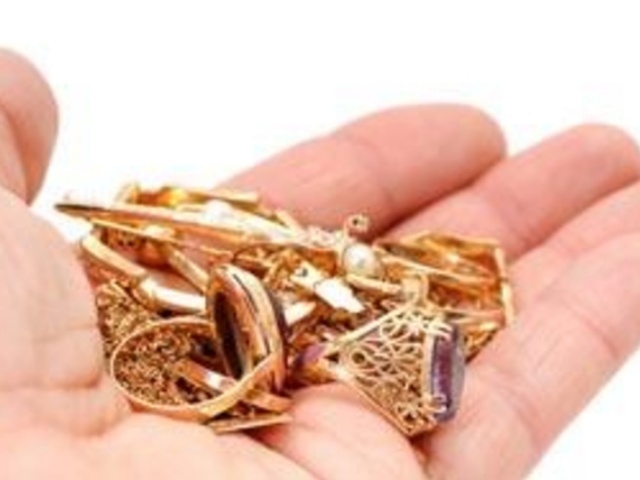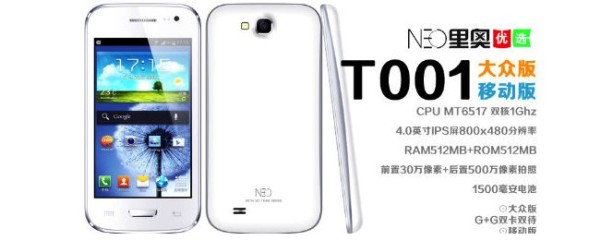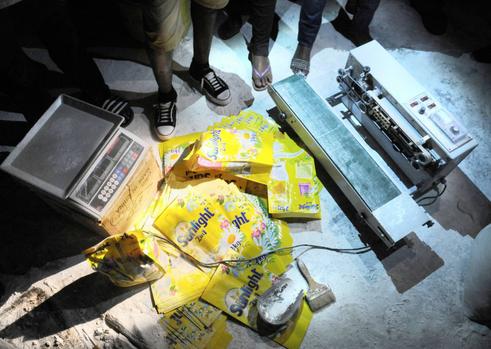
Sellers facing charges for counterfeit items at flea market
19 people are facing charges from selling $1.5 million worth of counterfeit merchandise at the Plaza Flea Market in Baltimore County. On February 16, detectives began serving search warrants on approximately 16 vendors who were believed to be selling counterfeit property at the flea market, according to Baltimore County Police. Detectives began investigating after complaints were received about counterfeit property. Police seized shirts, jackets, movies, CDs, sunglasses, jewelry, clothing, purses, including over 3,500 counterfeit phone accessories and over 4,000 pairs of counterfeit shoes. Detectives estimate the worth of the merchandise around $1.5 million. County police said that while search warrants were being served, detectives shut down the flea market to ensure that the vendors involved remained at the scene and that no evidence was removed from the property. The seized merchandise was evaluated by trademark experts who found 19 individuals faced with charges that included selling counterfeit merchandise. County police say that counterfeit merchandise is problematic for many reasons including consumer safety and taxes that are used to support local and state governments are not collected.
Lear MoreRs 2,800 crore penalty on telecom companies for 19L fake SIMs
The Department of Telecom (DoT) slapped penalty of Rs2,800 crore on major telecom companies between 2007 and 2012 after at least 19 lakhSIM cards were found to have been issued by them on fake identity papers.Under pressure, these telecom majors have started shedding SIM cards obtained with fake identity papers and have already deposited Rs 400 crore with the government against the penalty raised against them for failing to adhere to ‘know your customer’ (KYC) norms.The hefty penalty was imposed after TOI highlighted in a series of stories how SIM cards were procured on fake identity documents and some of which were used by terrorists to trigger blasts. When the government and telecom companies were in denial mode, TOI procured two SIMs in the name of then home secretary and the then Intelligence Bureau director without having to deposit any proof of their identity.The two connections, one post-dated and the other pre-paid, were activated by the firms without checking the veracity of the persons in whose name the connections were issued and the documents submitted as proof. Though initially the penalty amount imposed by DoT was Rs 1,000 for each SIM card obtained on fake papers, after 2009, the government raised it to a maximum of Rs 50,000 when huge discrepancies were discovered during scrutiny of customer application forms (CAF) of these firms.The maximum penalty was imposed on those telecom operators whose accuracy rate of correct proof of identity and address (PIA) was less than 80% of the total CAF checked.The telecom companies have, however, contested the graded system of penalty and have instead asked the government to impose penalty based on the income tax slab and that too retrospectively. Doing away with the graded system of penalty may bring down the current demand to one-third of the penalties imposed. A Telecom Disputes Settlement and Appellate Tribunal order has also gone in favour of telecom companies which are seeking lowering of penalty.
Lear MoreCall to give seized counterfeit goods to those in need
A Consumer group is urging the commerce ministry not to dump thousands of counterfeit goods it has seized in recent years but to give them to the needy instead.“With more and more people needing charitable help to get by, it may be time to change the system so that instead of disposing of items confiscated as part of consumer protection laws they can be given to people in need,” Loucas Aristodemou, the head of the consumers’ and quality of life union said yesterday. Possibly thousands of items are in storage at the commerce ministry – confiscated because they violated consumer protection laws by being counterfeits. An official at the commerce ministry’s competition and consumer protection service Froso Hadjilouca said yesterday those items “have been in storage for some years” and so a meeting had been scheduled for this week to decide how to dispose of them according to waste disposal laws, e.g. separating out recyclables. But she denied a report in daily Phileleftheros last week that said that around 22,000 ounterfeit products, among them shoes, clothes, toys, and cameras would be dumped at Kotsiatis landfill, contravening legislation on waste disposal and recycling. Asked if they could instead donate any safe items to needy families, Hadjilouca said their hands were tied. “It is not that simple. We are bound (by law) to destroy them,” she said. “It is an issue of misleading consumers, they are counterfeit goods,” Hadjilouca said.“The legislation needs to change so that people might be able to use these items,” she added.But Aristodemou suggested that changes could be made to the confiscated goods so that they could be distributed to those in need.“The ministry follows regulations and is only doing its job, but as of this moment there’s a crisis so why not alter the safe items?”He said that minor alterations could be made e.g. removing counterfeit branding or dangerous parts, such as dangling strings in clothes.Aristodemou said that the union was willing to recruit time and volunteers to make any necessary changes with the ministry’s supervision, “as long as the ministry takes the decision”. “I do not expect it would cost more than it takes to store, transport and destroy these items,” Aristodemou said.A 33-year-old mother of two told the Cyprus Mail she was “shocked” to hear that confiscated items would be destroyed. “It’s upsetting to hear about the growing numbers of people in poverty, who cannot even feed their children. If they can’t feed their children, they can’t provide them with decent clothes,” she said. “While I understand there are laws, surely they could be bent in some way during these difficult times (a reason repeatedly used by politicians to make law amendments, especially austerity-driven).”
Lear More
Beware of fake products
Tamil Nadu police have issued an 8-point advisory to the public to recognise and stay away from fake products. In the last three years, police have detected 131 cases of counterfeit products and arrested 117 people, besides seizing fake products valued around Rs 1.8 crore. A number of fake products such as toners for computer printers, spare parts for vehicles, air filters, toner powders, toner cleaning blades, diesel filters, fan regulators, fan, car spare parts, hand bags, suitcases, mobile phones, chargers, laptop batteries, spark plugs, clutch plates, cosmetics items, perfumes, oils, soaps, shower gel and after shave lotions are available in the market. The vendors who sell fake products do not issue receipts and thus avoid remitting taxes. “The use of fake products leads to adverse side effects,” police pointed out. The state video piracy cell, which is the agency dealing with cases related to fake products, advises the public to purchase goods only from authorised dealers. A genuine product will have its label and product details on the pack. “Look for the possible flaws in the labels, absence of authentic trademark, logos and holograms,” a video piracy cell official said. People are advised to check the websites of the original manufactures for product details rather than getting cheated by fraudulent sellers. Manufactures should let the public know the quality of their products by advertising in the media so that the people would be able choose the genuine product. A low price should not be a criterion for purchase of products by consumers, says a press release from the video piracy cell. Police also said that enforcers of intellectual property rights (EIPR) had been helping them to detect cases of counterfeit products.
Lear More
Fake Samsung Galaxy S III Mini available in China for $65
Samsung Galaxy S III Mini is the latest device to get its clone with Neo now selling such device in China and offering it for just $65. That’s pretty aggressive pricing considering that the specs are not far off from the original device. The Neo T001 comes with a 4-inch WVGA screen, MediaTek’s 1GHz dual-core processor, 512MB of RAM, 5-megapixel rear camera, VGA front-facing one and a 1,500mAh battery. In other words, it’s pretty similar to the “real deal” though it has less RAM — 512MB instead of 1GB. However, this Chinese “version” also packs dual-SIM support, allowing you to use the phone on two networks at once. All said, you would think we suggest grabbing the Neo T001. That is NOT the case. We can’t support rip-offs and the companies making them. To be fair, Neo has some original models though this one (obviously) isn’t one of them.
http://www.intomobile.com/2013/03/09/fake-samsung-galaxy-s-iii-mini-available-china-65/
Lear MoreNSW cops seize fake mobile accessories
Police have seized tens of thousands of dollars worth of alleged counterfeit goods including fake mobile phone and tablet accessories during raids in Sydney’s northwest. Aided by officers from from Trademark Investigation Services, police have identified dozens of boxes containing fake merchandise from brands including Adidas, Apple, Chanel and Samsung. The items were seized during search warrants at various locations, including marketplace and shopping centre stalls, private residences and a warehouse. Inquiries are continuing and a number of people are expected to be charged.
Lear More
$4 million in fake drugs, consumer products seized from Columbia warehouse
Federal authorities seized nearly $4 million in fake drugs and designer products over a two-week period from a warehouse near Williams-Brice Stadium, the Department of Homeland Security said Friday. The warehouse allegedly served as a re-shipping facility for counterfeit drugs manufactured in India and designer goods produced in China, the Department of Homeland Security’s U.S. Immigration and Custom’s Enforcement office said. The warehouse’s location was not made public. No arrests have been made, said Vincent Picard, a spokesman for the U.S. Immigration and Custom’s Enforcement, adding an investigation is continuing. Between Feb. 19 and March 6, $3.6 million in counterfeit pharmaceuticals including Viagra, Cialis and Proscar, and $290,000 in counterfeit or pirated DVDs, sunglasses, handbags and other products were confiscated. S.C. Secretary of State Mark Hammond, whose office worked with federal authorities in the investigation, said counterfeit goods hurt legitimate businesses as well as consumers. “Fake medicine takes this harm to another level because it can literally kill you. … Passing off so-called ‘pharmaceuticals’ as a cheap alternative to name-brand medicine is a prescription for disaster,” Hammond said. “I am very pleased that these fakes are off of our streets.” Vincent Picard, a spokesman for the U.S. Immigration and Custom’s Enforcement , said consumers always should be cautious when purchasing drugs online, especially if the offer comes unsolicited in an email. “The buyer must beware. If the deal looks too good to be true it probably is,” Picard said. He acknowledged that there have been instances of counterfeit drugs making their way into pharmacy shelves, but “that’s the exception, not the rule.”
Lear More
7 held over fake washing powder
Sars officials and Joburg police cleaned up a dirty operation in Doornfontein on Wednesday night, seizing about R300 000 in fake soap powder. At the run-down warehouse, officials found green canvas bags of soap powder labelled “Neutralizer – wash car” being emptied out, weighed and repackaged as Omo and Sunlight soap. Effectively, soap for washing cars was apparently being sold as laundry soap.Soap powder covered the floor.A pile of empty green canvas bags showed how much counterfeit soap powder had been processed through the operation. Heavy canvas bags, stamped with English and Oriental writing, held the brightly coloured brand-new plastic Omo and Sunlight packets, ready for filling. The Omo and Sunlight packets had English, French and Portuguese details on them, and expiry dates of 2016. A customs official, who did not wish to be named, said they had received a tip-off from someone who had seen a truck leaving the premises. Lieutenant-Colonel Lungelo Dlamini of the Gauteng SAPS said seven people who were working on the repackaging were taken in for questioning. He said six were Malawian and one was Zimbabwean. “They’ve got asylum papers, but we are still going to check the papers to see if they are genuine,” said Dlamini. “They said that they’ve been in this place for about three months.” He estimated the value of the soap, scales and bag-sealing machines seized at about R300 000.
http://www.iol.co.za/news/crime-courts/7-held-over-fake-washing-powder-1.1482388#.UTiqOhy1chE
Lear MoreMillions worth of fake Louis Vuitton products seized in Cebu
Customs agents on Wednesday seized P100 million worth of fake Louis Vuitton signature bags and accessories from a fashion store inCebuCity.The confiscation was a response to a letter of complaint sent by the lawyer of the country’s authorized dealer of Louis Vuitton products, according to Customs Commissioner Ruffy Biazon. “We will go after illegally imported goods no matter where they are and who are the people behind it,” said Biazon, who was in Cebu for the operation.The fake products were seized from a fashion store allegedly owned by a Korean national, according to theBureauofCustoms. While in Cebu, Biazon also inspected four container vans of smuggled sugar from Thailand worth P5 million that were seized earlier for not having the required import permit from the Sugar Regulatory Authority.The sugar seizure was effected by the Customs Intelligence and Investigation Service in Cebu and was done amid an earlier seizure of 20 container vans of smuggled rice from Taiwan worth P10 million.
Lear More
Fake Hermès Bags Worth £10 Million Seized
Hundreds of counterfeit Hermèsbags were uncovered in LA last month, with a value of almost £10 million. US Customs and Borders Protection seized two shipments from China – and over 1,500 fake basgs – at the Long Beach port in February, worth $14.1 million (£9.36 million).”Once again this seizure demonstrates the high level of skill and vigilance of our officers in protecting the intellectual property rights of companies and individuals,” Todd Owen, director of CBP’s Los Angeles field office, toldWWD. “As well as preventing the proliferation of counterfeit luxury handbags, potentially damaging our national economy.”No arrests have yet been made in connection with the goods seized.In other news, German television network, Ante, has confirmed plans to screen a documentary tonight, centring around the brand’s heir, Patrick Guerrand-Hermès- despite a previous court injunction preventing the film from being shown.A Paris civil court ruled that the programme – which features details of an ongoing land ownership dispute in Morocco between the businessman and a local family – could not be broadcast “in its current form”, as it reveals his address and breaches his right to privacy, reportsWWD. A spokesperson for Arte confirmed that “the court ordered that certain scenes should be cut or blurred”.As the injunction was aimed at the production company, Epiphène Films, as opposed to the network, its believed that the documentary –Hercule contre Hermès(Hercules versus Hermès) – will be broadcast unaltered. The fashion house declined to comment.
Lear More


